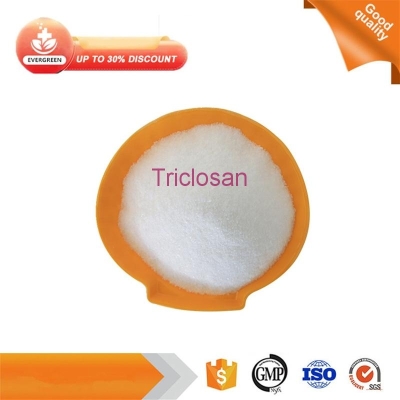-
Categories
-
Pharmaceutical Intermediates
-
Active Pharmaceutical Ingredients
-
Food Additives
- Industrial Coatings
- Agrochemicals
- Dyes and Pigments
- Surfactant
- Flavors and Fragrances
- Chemical Reagents
- Catalyst and Auxiliary
- Natural Products
- Inorganic Chemistry
-
Organic Chemistry
-
Biochemical Engineering
- Analytical Chemistry
- Cosmetic Ingredient
-
Pharmaceutical Intermediates
Promotion
ECHEMI Mall
Wholesale
Weekly Price
Exhibition
News
-
Trade Service
After the air in the magnesium sulfate dryer is heated and purified, it is introduced from the lower part by the induced fan and passed through the mesh plate
of the hopper.
In the studio, fluidization is formed by stirring and negative pressure, and the water evaporates rapidly and is carried away with the exhaust gas, and the material is rapidly dried
.
The characteristic fluidized bed is a circular structure to avoid dead ends
.
The hopper is set to stir to avoid agglomerating wet materials during drying and forming a channel flow
.
The use of dumping and unloading, convenient, fast, but also according to the need to design automatic inlet and outfeed system
.
Closed negative pressure operation, the air flow is filtered, simple operation, easy to
clean.
Ideal for "GMP" compliance
.
The drying speed is fast and the temperature is uniform
.
Magnesium sulfate dryer is divided into bell type freeze dryer in structure: lyophilization chamber and cold trap for upper and lower separation structure, lyophilization chamber without pre-freezing function
.
This type of magnesium sulfate dryer requires manual operation
when the material enters the drying process after pre-freezing.
Experimental magnesium sulfate dryers are mostly bell cover type, simple structure and low
cost.
Most of the lyophilization chambers are covered with transparent plexiglass, which makes it easy to observe the lyophilization of the
material.
In situ magnesium sulfate dryer: The lyophilization chamber and the cold trap are two separate chambers
.
The shelves in the lyophilized chamber have a refrigeration function
.
After the material is placed in the lyophilization chamber, the pre-freeze-drying process of the material does not require manual operation
.
This kind of magnesium sulfate dryer production process is complex, high manufacturing costs, but in situ magnesium sulfate dryer is the development direction of magnesium sulfate dryer, is the ideal choice for exploring frozen products - drying process, especially suitable for pharmaceuticals, biological products and other special products
.
Lyophilized
.
With glanding device type: suitable for drying
the material in vials.
When ready to freeze-dry, the material is loaded into the vial as needed, and the lid is floated before lyophilized
.
After drying, the capping mechanism is operated to tighten the cap to avoid secondary contamination
.
, reabsorbs moisture for prolonged storage
.
Multi-manifold type: A flask is installed outside the drying chamber for drying the material
spun on the inner wall of the bottle.
At this point, the flask is attached as a container to the manifold outside the drying chamber
.
The material in the flask is heated
at room temperature.
With the multi-manifold switchgear, the flask
can be removed or reloaded as needed without downtime.
With pre-freezing function: In the pre-freezing process of the material, the cold trap acts as a pre-freezing chamber to prefreeze
the material.
During the drying process, a cold trap is a water trap that captures moisture that spills out of the material
.
Magnesium sulfate dryer with pre-freezing function, the pre-freezing and drying of materials in the lyophilization process are completed on the magnesium sulfate dryer, magnesium sulfate dryer has high efficiency, cost saving and low constant temperature refrigerator
.
Also in industrial production, the magnesium sulfate dryer monohydrate mainly uses a fixed fluidized bed dryer, because the process of drying magnesium sulfate monohydrate in the fixed fluidized bed dryer is relatively mature, the equipment maintenance rate is low, and the equipment footprint is small.
, the province of
investment.
Since magnesium sulfate monohydrate needs to be crushed again after drying, some equipment manufacturers have improved the production process of magnesium sulfate monohydrate and adopted a rotary flash dryer, because the finished product after drying the flash dryer can be pulverized once, reduced after drying, and it is crushed
.
In summary, magnesium sulfate dryers come in many forms, mainly using fluidized bed dryers, drum dryers and drying chambers
.
It is recommended to use a fixed fluidized bed dryer because the maintenance rate of vibratory fluidized beds is high and the vibration motor needs to be replaced frequently; Bowl dryer in the actual production and application process is prone to sticky wall phenomenon, cleaning is very troublesome; The oven has no heat recovery and reuse, and the energy consumption is high
.
It is a drying method
with high energy consumption.
This method is gradually eliminated
in production.







